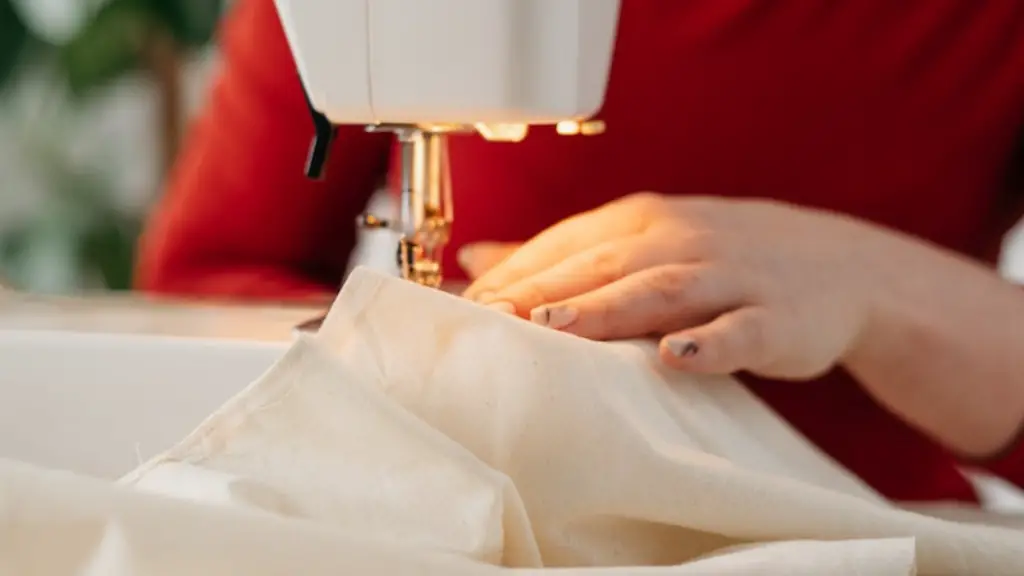The debate about whether a serger is a suitable alternative to a sewing machine has been going on for some time. While both machines can be used to complete similar tasks, there are some distinct differences between them. Whether a serger replaces a sewing machine depends on the project and personal preference of the user. Understanding the differences between the two can help decide which is right for the project as well as some advice on how to use them.
General Overview
A serger and a sewing machine, despite their similarities, are two entirely different machines. The main purpose of a serger is to finish the edges of your fabric, while the main purpose of a sewing machine is to stitch two pieces of fabric together. Sewing machines use a needle and thread, while sergers use one or multiple threads to cut, sew, and finish the edges of the fabric.
A sewing machine stitches together two pieces of fabric and can directly sew onto the fabric with a single stitch style or multiple stitch styles such as zigzag or satin stitch. By contrast, a serger locks and overcasts the edges of the fabric, using a four or five thread stitch to bind the edges and stop the material from fraying. As a result, a serger won’t be able to sew together two pieces of fabric, but only overstitch the edges of them.
When to Use a Serger vs Sewing Machine?
A serger can be used to make edges more neat and secure while adding a professional finish and increasing the longevity of the fashion item. It is used to sew lightweight fabrics of all types, including silk and spandex, as well as to secure seams on denim and stretch fabrics. Sergers are not designed to make buttonholes, do quilting, or do reverse stitching.
A sewing machine is used when a more secure and permanent stitch is needed. Most sewing machines can complete stitches such as topstitch, zigzag stitch, buttonholes, reverse stitching and quilting. They are also ideal for sewing heavy fabrics such as denim or upholstery fabrics.
Complexity and Cost
Compared to sewing machines, sergers are generally more complex and expensive. This is because sergers have three tasks that a sewing machine does not: cutting, overcasting, and finishing. Advanced serger models have powerful motors and many secondary functions, such as the ability to gather fabric or create decorative edges.
On the other hand, sewing machines come in a range of prices to suit a variety of projects and budgets. It is possible to purchase a basic model as a first machine and then upgrade as needed. Although a basic machine is less expensive, it is also limited in some aspects, such as lack of adjustable stitch length, width, and tension.
Maintenance and Stitch Quality
Sergers require more frequent maintenance compared to a sewing machine. The blades need to be sharpened and the tension adjusted regularly. If the needles and thread are not correctly inserted, stitches may not be as secure or as neat. However, when correctly maintained and used, a serger can create a sleek, professional-quality stitch that is nearly invisible.
A sewing machine is generally easier to maintain, but the stitch quality can be slightly visible from the right side depending on the type of presser foot used. A basic machine may produce uneven and slightly sloppy stitches, but with practice or with upgrading to a better machine, the quality of stitches can be improved significantly.
Extra Features
In addition to the standard features, sergers and sewing machines may also include several extra features such as speed control, thread trimmer, adjustable presser foot, free arm capability, and adjustable stitch length and width. All of these extras can come in handy depending on the project and user.
Many modern sewing and serging machines also come with computerized technology, allowing for a comprehensive range of stitch patterns and designs as well as extra functionality. Computerized machines are often more expensive due to their capabilities, with prices range from entry-level machines to top-of-the-line. However, with the right skill and knowledge, crafting projects can be exceptionally enjoyable with a computerized machine.
Conclusion
In conclusion, both sergers and sewing machines can be used to create a range of projects, but they are not interchangeable and should be used for specific tasks. Knowing the capabilities and limitations of each machine as well as the type of projects they are most suitable for will help decide which machine is the right choice.



